Strengthening Concrete Silo Wall
CFRP
Reinforce the silo wall according to the alumina silo reinforcement drawing. This project uses a rigid-strength grade I unidirectional fabric (cloth), 300g/m2, 0.167mm thick, the design value of tensile strength is 2300MPa, and the standard value of tensile strength is greater than 3400MPa.
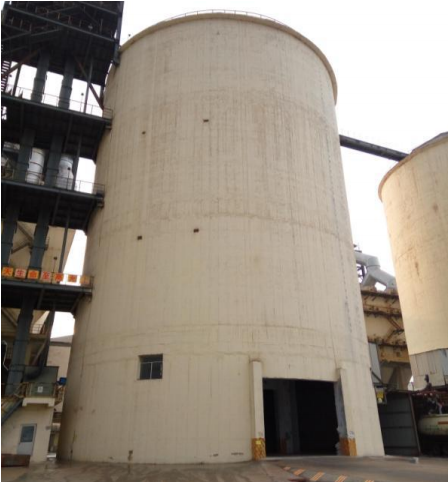
This project is an aluminum oxide silo of No. 2 Fly Ash Plant, which is a reinforced concrete tube structure reinforcement project. According to the classification of the support form, the alumina silo is column-cylinder support. Below 8.5m are the tube structure and the pilaster, the thickness of the inner tube and the outer tube are both 500mm. The column cross-section size is 1000mm×1000mm, the column and the column are connected by a connecting beam with an interface size of 800mm×1800mm, and there is a ring beam with a cross-section size of 800mm×1800mm between the tube structure and the warehouse structure. The alumina silo is a reinforced concrete round silo with an inner diameter of dn=25m, the height of the alumina silo is 40m, and the foundation form is a piled raft foundation. The height of the silo wall h=31.5m, h/dn=1.6<1.5, and the design strength of concrete for shallow silo is C35. The construction of the project was completed in 2013, and inspection and reinforcement were carried out in 2016.
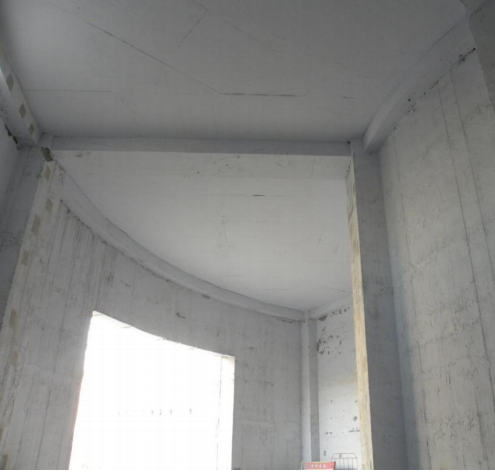
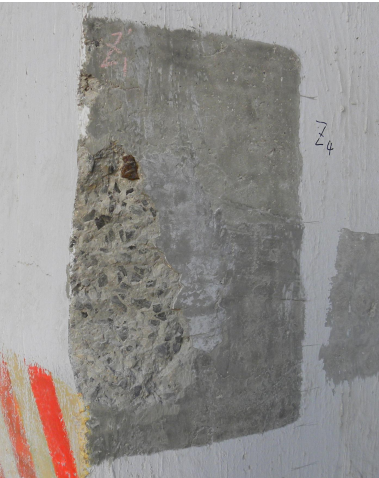
On-site inspection photos
According to the estimated value of concrete strength of the alumina silo wall, the concrete grade C25 is deduced, which is quite different from the original designed concrete grade. The reason is:
Alumina silo was not vibrated due to careless construction, resulting in congenital defects;
Due to problems such as high pressure, temperature and corrosion inside the silo, elephant feet appear on the bottom of the silo wall, and small cracks appear;
Quick unloading and unstandardized loading and unloading caused insufficient compressive bearing capacity of the silo wall.
The test results show that the compressive strength of the alumina silo wall concrete of the project above 8.500m does not meet the requirements of the design strength level C35. And it is recommended to carry out reinforcement treatment to eliminate the hidden dangers of production safety caused by insufficient concrete strength of the silo wall.
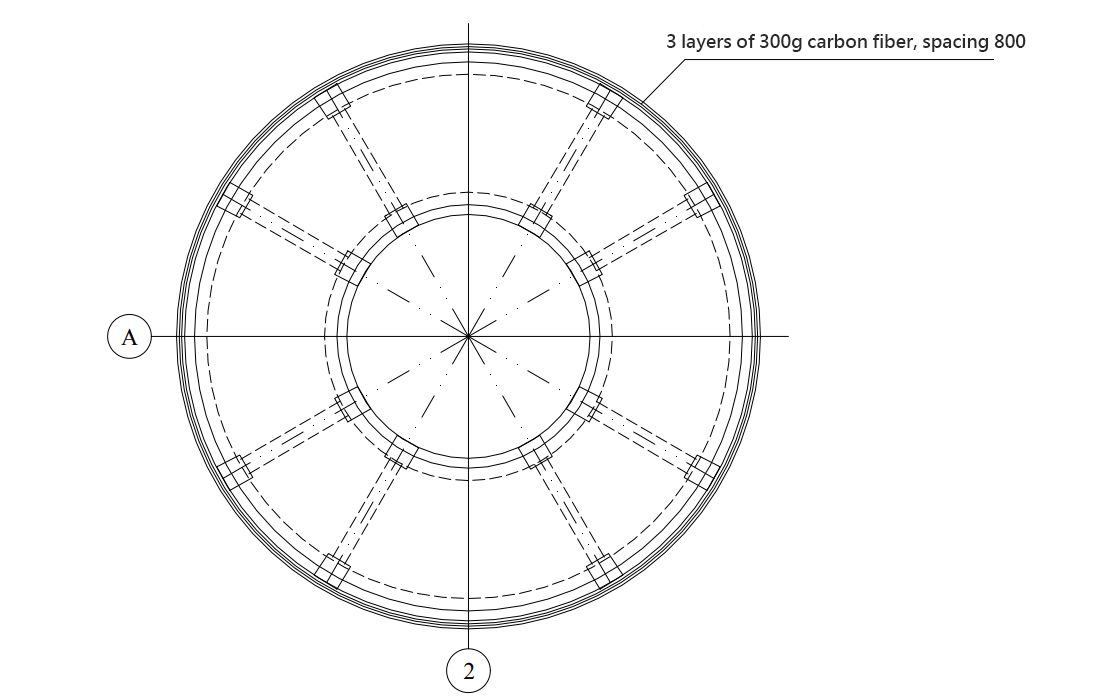
Reinforcement scheme and construction of alumina silo
This project uses carbon fiber reinforced reinforced concrete silo, carbon fiber can provide effective hoop restraint for alumina silo.
After testing, the concrete strength grade of the alumina silo wall does not meet the strength grade of the original designed concrete, and the circumferential binding force provided is insufficient. The carbon fiber reinforced silo is a silo that can make up for the lack of the original concrete in the circular binding force
From a mechanical point of view, the high tensile performance of carbon fiber cloth can provide very favorable hoop restraints for reinforced concrete silos. Under the interaction between the silo wall and the carbon fiber, the silo wall changes from the original horizontal and vertical two-way tension and compression state of the original storage material to the current three-way compression state. (Storage material horizontal circumferential pressure, vertical friction and carbon fiber cloth horizontal circumferential pressure). Improve the lateral resistance of the silo wall, effectively improve its mechanical properties, increase the hoop binding force, and increase the load-bearing capacity.
Reinforcement construction of alumina silo
Reinforce the silo wall according to the alumina silo reinforcement drawing. This project uses a rigid-strength grade I unidirectional fabric (cloth), 300g/m2, 0.167mm thick, the design value of tensile strength is 2300MPa, and the standard value of tensile strength is greater than 3400MPa.
When the alumina silo is reinforced with carbon fiber, the silo should be fully unloaded. This is because carbon fiber reinforcement is passive reinforcement under passive force. In passive reinforcement, it is necessary to consider the influence of secondary force on the structure. In the alumina silo, the concrete was not vibrated sufficiently when the concrete was poured, so that some parts of the wall of the silo had a honeycomb hemp surface. Before the carbon fiber was pasted, the honeycomb hemp surface was repaired. When restoring the honeycomb pitted surface of the concrete, the entity of the original honeycomb pitted surface should be removed. Then, two methods of visual inspection and fine wire inspection are used to inspect the concrete entity, so that the sand holes, pores and cracks in the existing concrete body can be completely eliminated. After fully moistening the concrete, use C40 concrete for pouring and tamping. Carbon fiber cannot be pasted immediately after pouring. According to the specification, the surface moisture content of the concrete where the carbon fiber is pasted should not be greater than 4%, and should not be greater than 6%. If the moisture content of the concrete surface exceeds the limit, manual drying or special structural glue for high-humidity surface must be used.
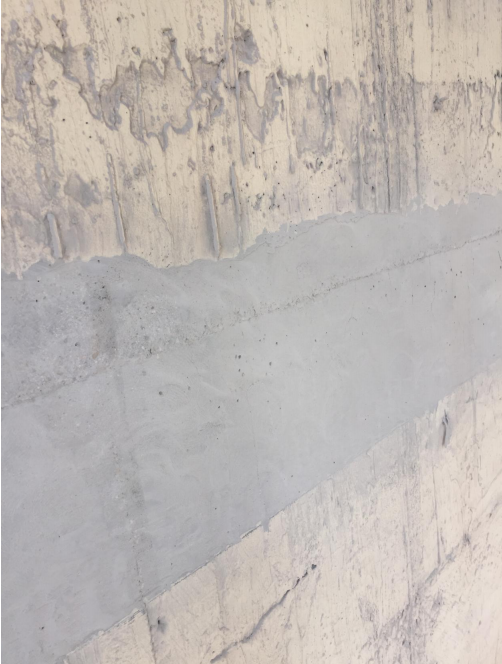
Honeycomb pitted surface treatment of silo wall
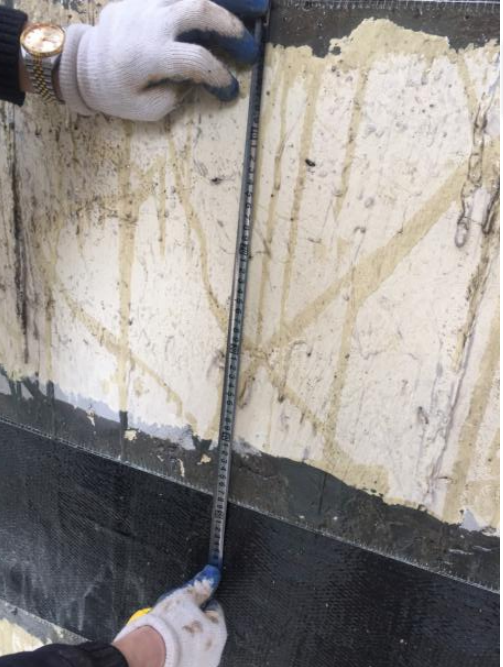
Carbon fiber CFRP, spacing 800mm
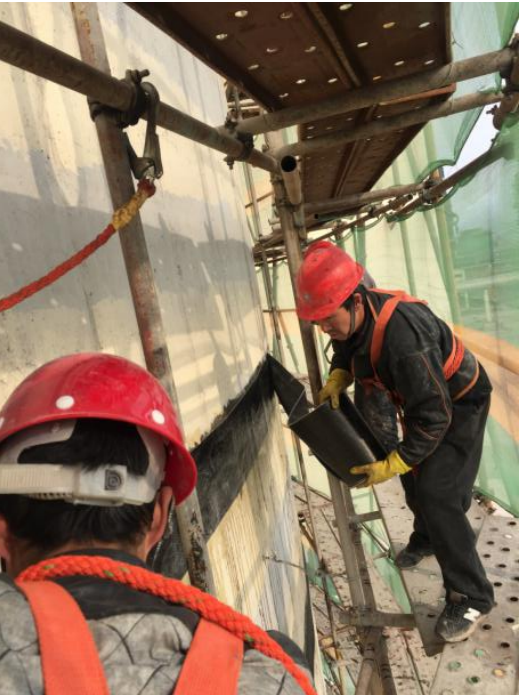
Bonded CFRP carbon fiber to the silo
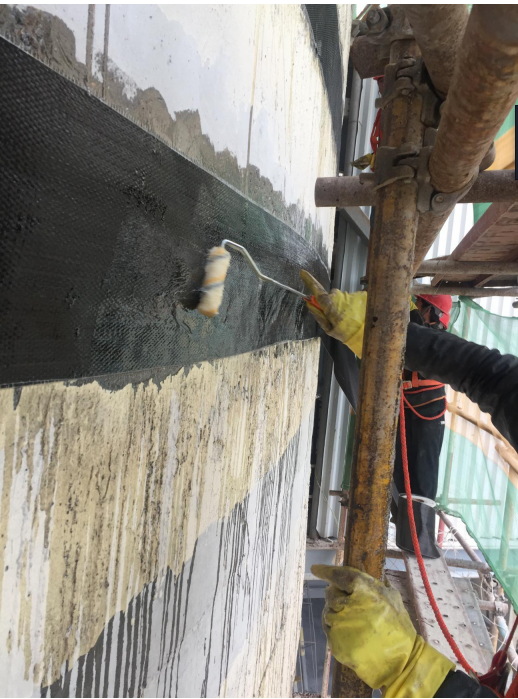
Apply carbon fiber adhesive on carbon fiber
In order to ensure the durability of the reinforced components, the surface of all the components reinforced with carbon fiber is protected by 2 layers of fireproof coatings, the thickness of which is not less than 5mm. When sticking carbon fiber, reliable anchoring should be used to make the carbon fiber more capable of exerting the tensile strength of the fiber. In addition to structural adhesives, steel plates still need to be anchored, and the anchoring force must be greater than or equal to the tensile strength of carbon fiber.
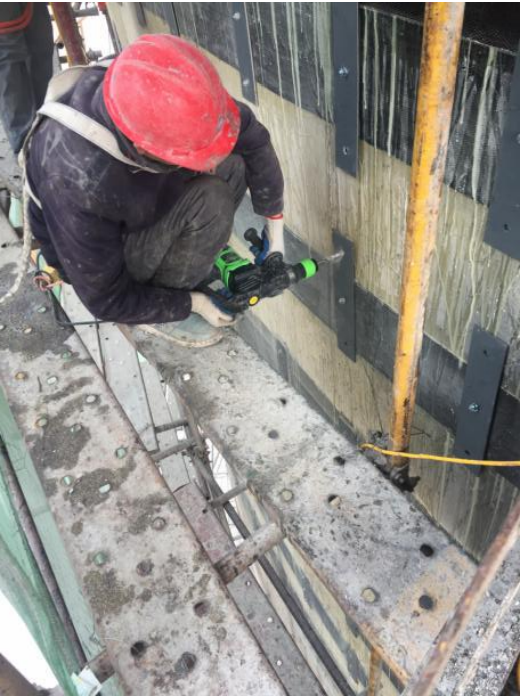
Expansion bolt anchoring steel plate bead
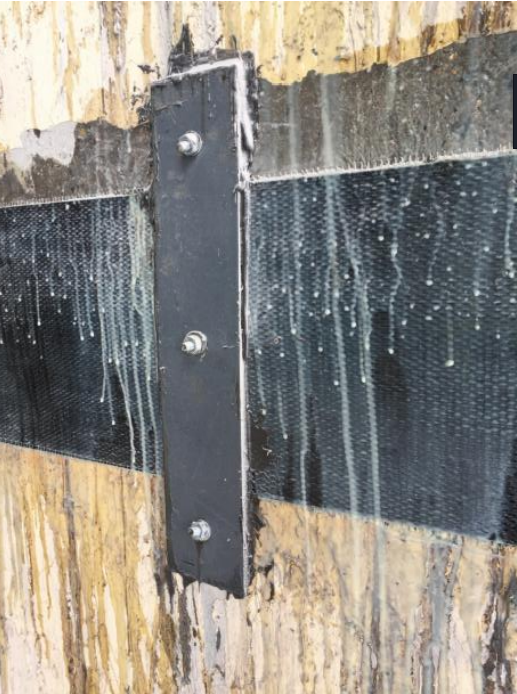
Steel bead for CFRP strengthening